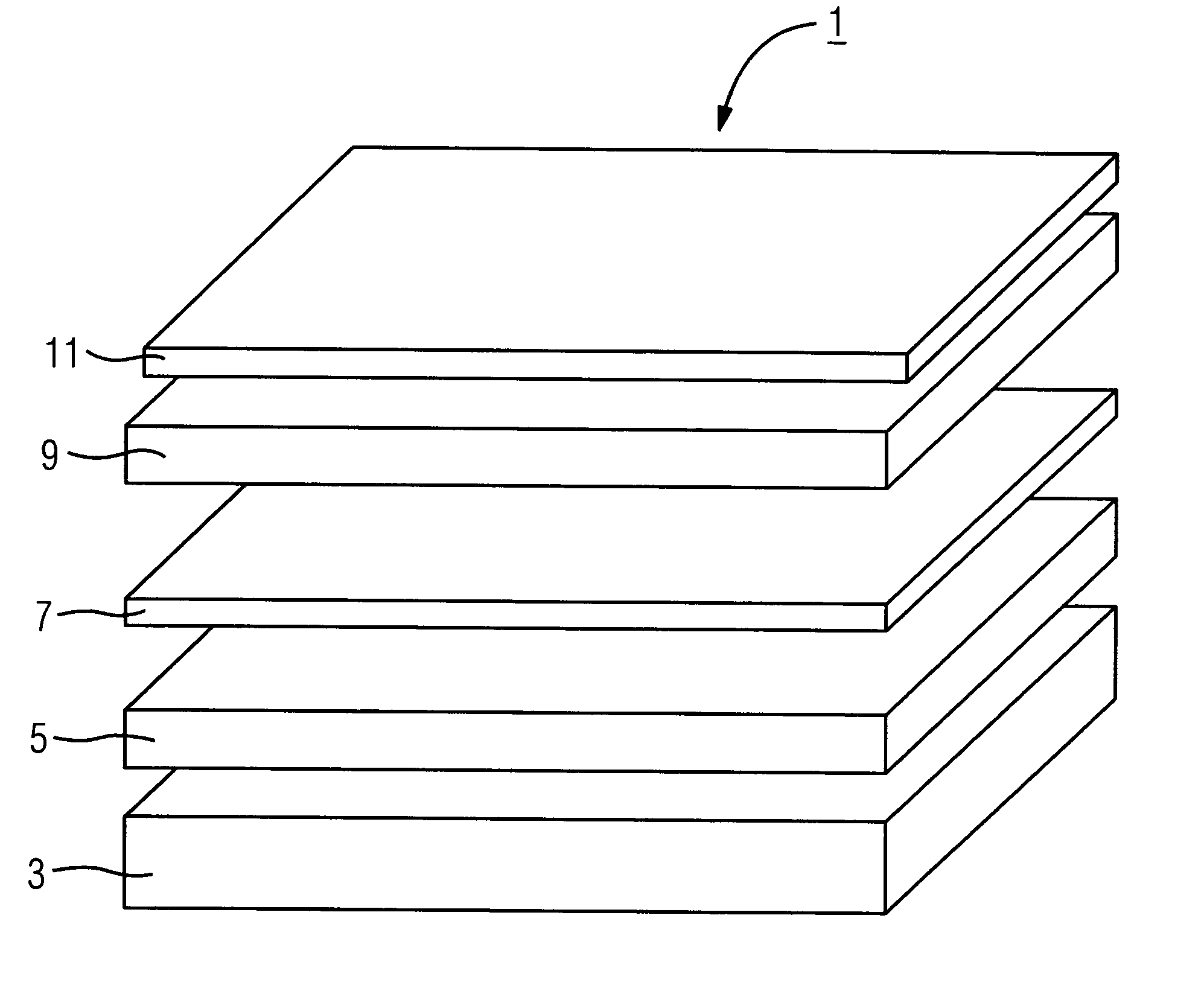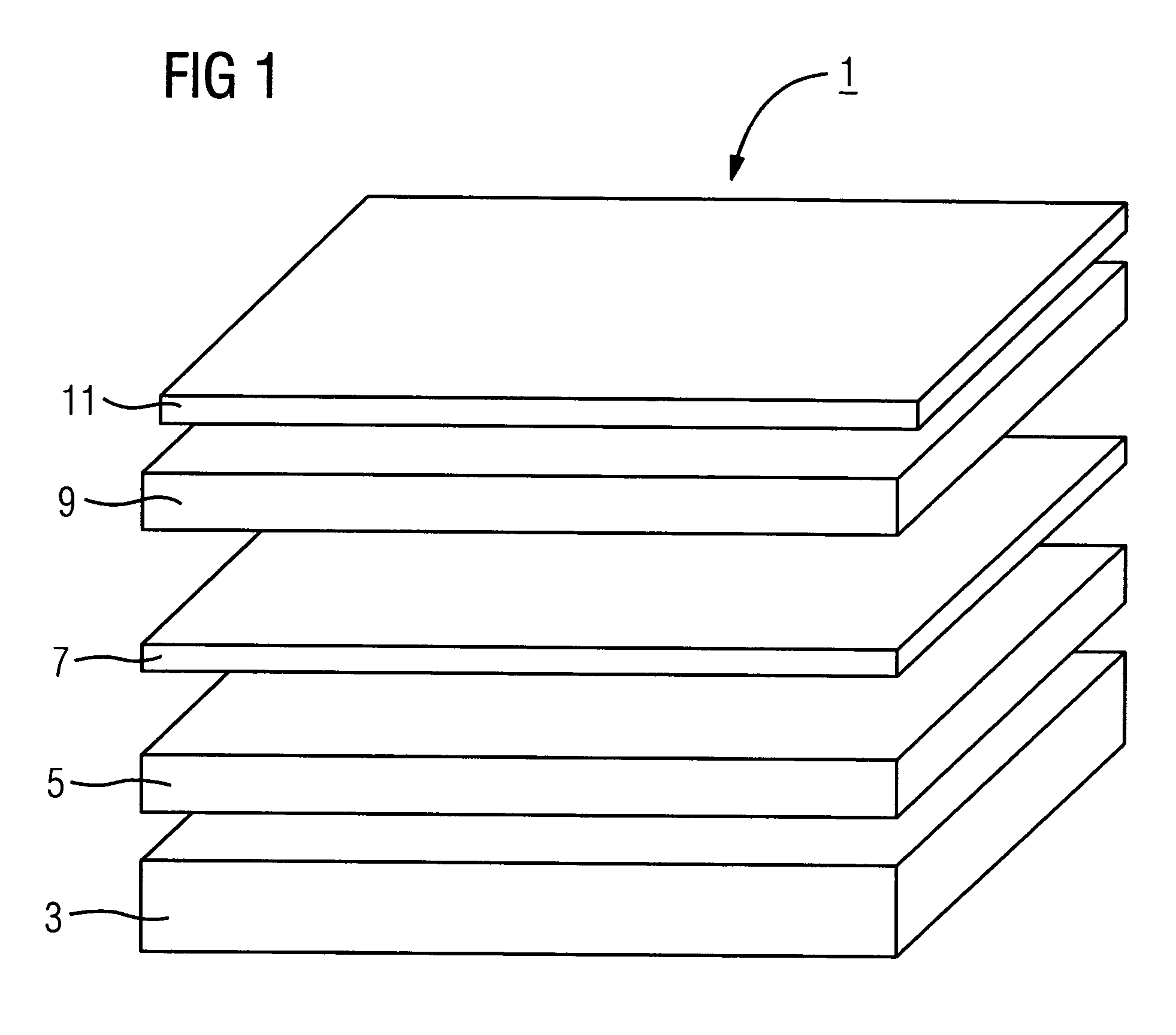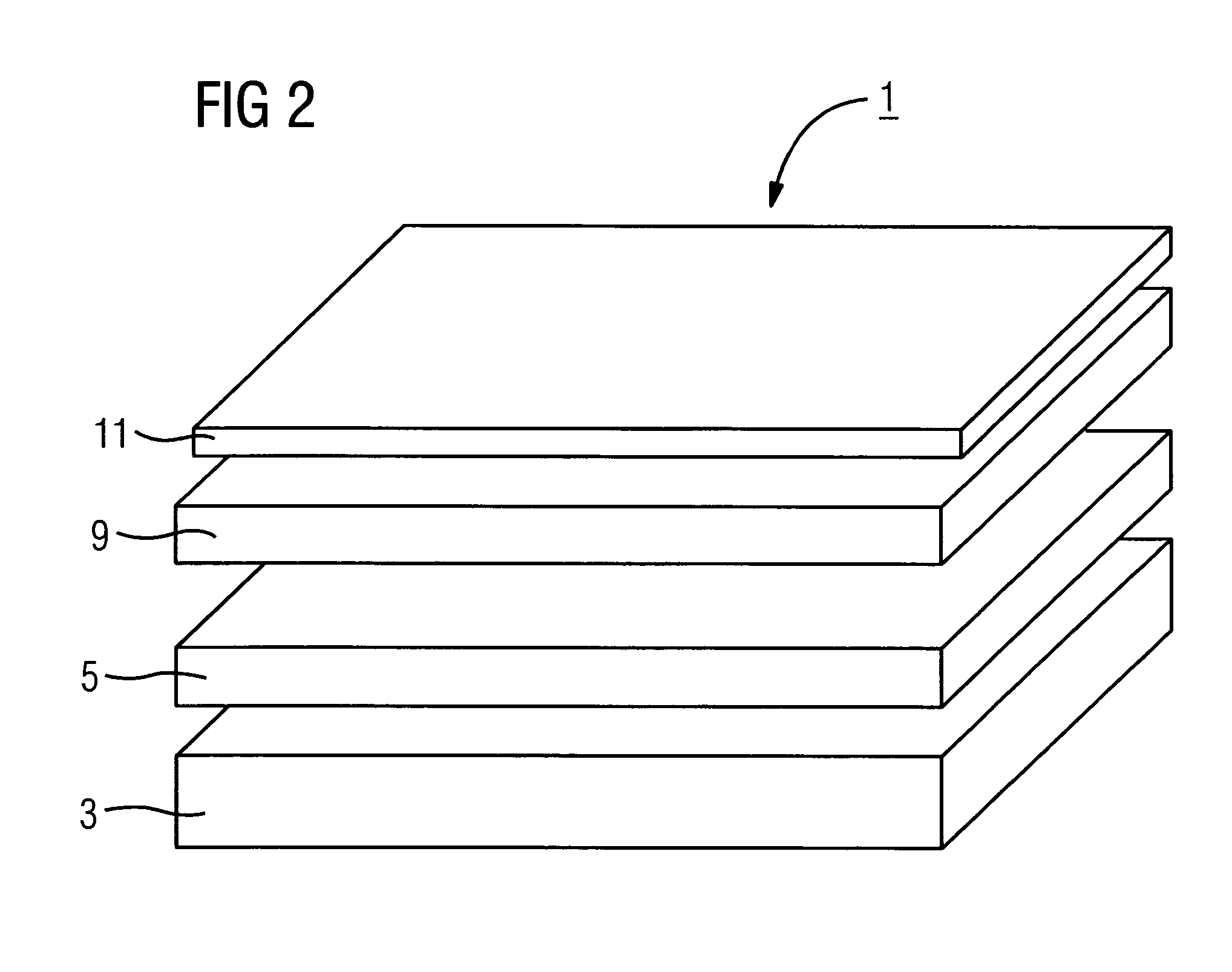X-ray detector including a scintillator with a photosensor coating, and a production process
a technology of photosensor and scintillator, which is applied in the direction of x/gamma/cosmic radiation measurement, radiofrequency control devices, instruments, etc., can solve the problems of complex and expensive production and pattern of concepts, insufficient time recording dynamics, and insufficient x-ray sensitivity. , to achieve the effect of good time recording dynamics, good measuring channel separation, and sufficient x-ray sensitivity
- Summary
- Abstract
- Description
- Claims
- Application Information
AI Technical Summary
Benefits of technology
Problems solved by technology
Method used
Image
Examples
Embodiment Construction
[0019]FIG. 1 shows the layer structure of an X-ray detector 1 for a CT device with an intermediate layer 7. For the sake of clarity, the layers are illustrated spaced apart from one another, but in reality are to be in direct contact with one another. Thus, in particular, the layers are not inherently rigid and can therefore bear optimally against one another. The layer structure is only diagrammatically illustrated. In particular, the figure does not illustrate any patterning or pixelation, since patterns of this type and the processes used to produce them do not form the subject of the present invention.
[0020]The layer structure is based on the combination of a phosphor layer 3 based on a ceramic scintillator material with a photodetector layer 9 based on an organic material.
[0021]Typical ceramic scintillator materials, e.g. Gd2O2S, CdWO4, etc., may be used for the phosphor layer 3. Scintillator materials of this type are mechanically stable. This property is exploited by virtue o...
PUM
 Login to View More
Login to View More Abstract
Description
Claims
Application Information
 Login to View More
Login to View More - R&D
- Intellectual Property
- Life Sciences
- Materials
- Tech Scout
- Unparalleled Data Quality
- Higher Quality Content
- 60% Fewer Hallucinations
Browse by: Latest US Patents, China's latest patents, Technical Efficacy Thesaurus, Application Domain, Technology Topic, Popular Technical Reports.
© 2025 PatSnap. All rights reserved.Legal|Privacy policy|Modern Slavery Act Transparency Statement|Sitemap|About US| Contact US: help@patsnap.com



